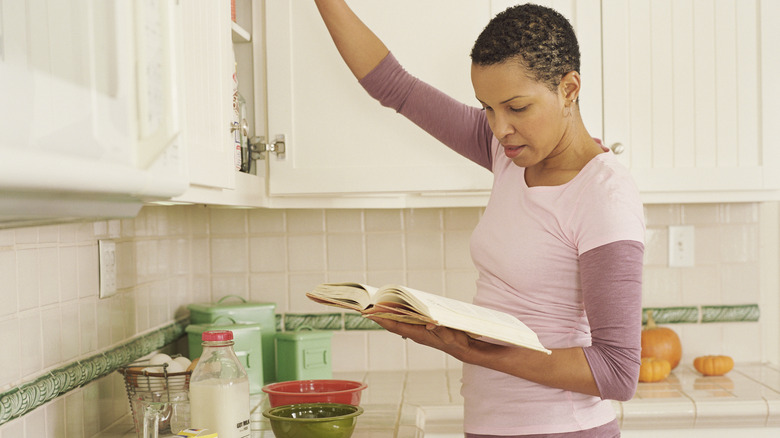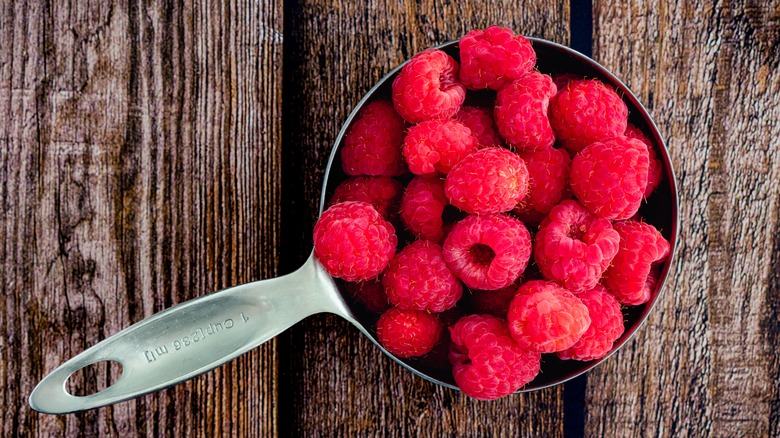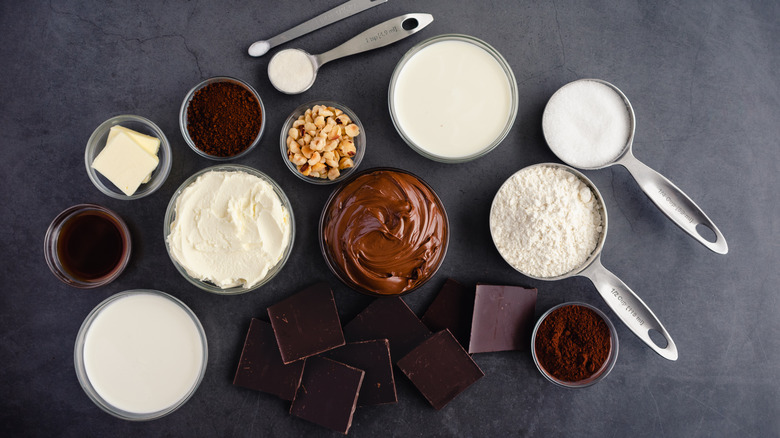The Mistake You're Probably Making When Reading A Recipe
For a quick weeknight dinner, you may be inclined to improvise. This could be totally fine when you want to spruce up a frozen stir-fry but is not the vibe when you are trying out a recipe for the first time. Nailing a dish is about really understanding the ingredients and process, and seemingly unimportant word choice can actually have a big impact on the final product. For well-written instructions, it is safe to assume that the recipe developer presented it that way for a reason.
For example, it may appear that "1 cup of rice, cooked" is the same as "1 cup of cooked rice," but those are wildly different instructions. The former means that the raw rice should be measured and then cooked — which yields about three cups of cooked rice — while the latter calls for already cooked rice. Clearly, those are very different measurements. Imagine putting pre-cooked rice in a casserole where the raw grain is meant to absorb all the liquid. The result would be a soupy, mushy mess. Or, what if you accidentally used raw arborio rice in a pesto arancini recipe? Instead of biting into cheesy, pillowy, goodness, it would feel like a mouthful of gravel.
The same rule applies to many other dried goods that cook by absorbing liquid, such as beans, pasta, couscous, and quinoa. Also, look out for produce that can be measured whole but is also commonly cut, such as cherry tomatoes, mushrooms, berries, and grapes.
Take care when measuring ingredients for baking
Instructions regarding common baking ingredients like nuts, fresh and dried fruits, and chocolate should also be read carefully. Imagine filling up a measuring cup with pecan halves versus chopped pecans. There is a whole lot more space between the halves than there is between the smaller pieces, which means one cup of chopped pecans will be a greater quantity by weight than one cup of pecan halves.
A dish that calls for pureed raspberries provides another good example. Measuring a cup of raspberries and then blending them is very different from measuring out a cup of already pureed raspberries. If the recipe you are reading is unclear, you may be better off pivoting to one that is more precise.
To alleviate some of these issues, many baking recipes rely on measurements by weight rather than volume, so a digital scale may be worth the investment. It is the kitchen tool Duff Goldman says every beginner baker should have, and it can make the process much easier and more precise.
More tips on understanding a recipe
No matter what you are making, it is absolutely key to read a recipe all the way through before you do anything. You never want to be second-guessing the directions when you already have hot food on the stove, and you'll be better able to plan how long each step will take — so, if you're making multiple dishes, you can try to time them to be ready at the same time.
Also, pay attention to the order of operations for the sake of organization and the desired result. Understanding if the recipe is calling for adding wet ingredients to dry or vice versa helps you decide on the size of bowls you'll need. Or, for example, butter added at the beginning for a sautee or at the end to emulsify a sauce will yield different textures and flavors. Remember, assume that the recipe writer made intentional decisions with the instructions.
Once you have a mental game plan, get out all the ingredients you need and do the chopping, dicing, and measuring work first. The reason celebrity chefs make it look so easy is because all the components of a dish are already laid out, and they can just grab and go. This is especially important in dishes that come together quickly, but it also helps in the smooth execution of any recipe.



